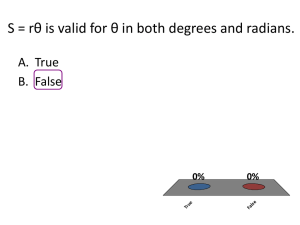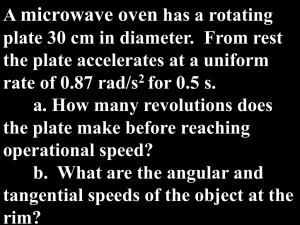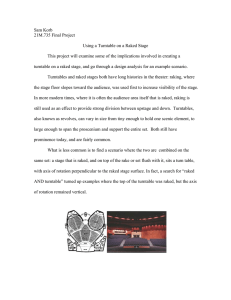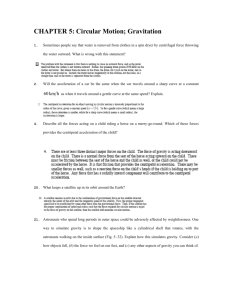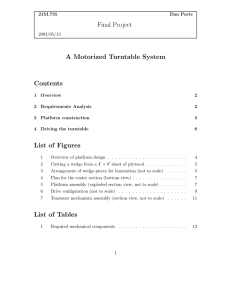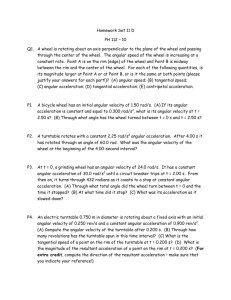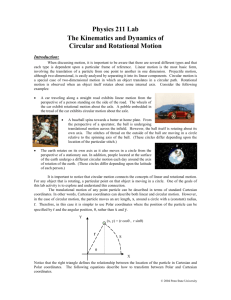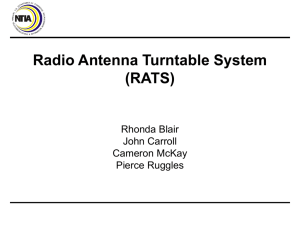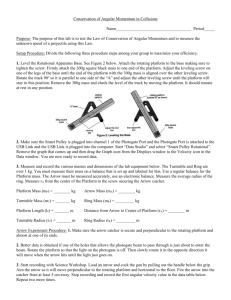Exam questions - Grand Valley State University
advertisement
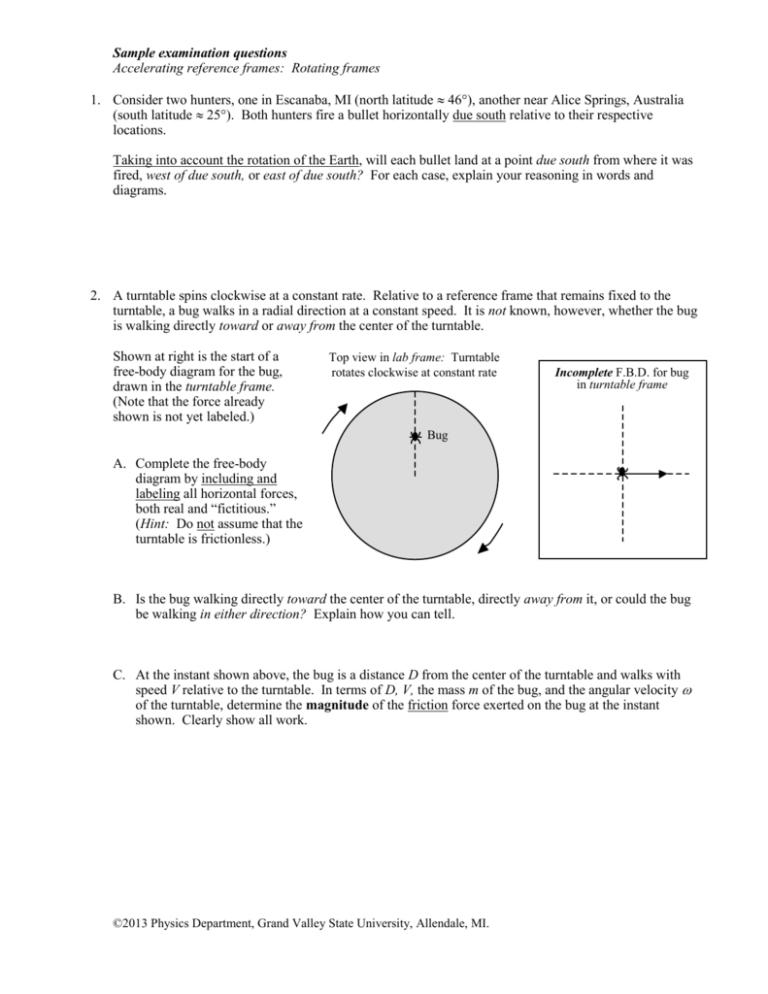
Sample examination questions Accelerating reference frames: Rotating frames 1. Consider two hunters, one in Escanaba, MI (north latitude 46), another near Alice Springs, Australia (south latitude 25). Both hunters fire a bullet horizontally due south relative to their respective locations. Taking into account the rotation of the Earth, will each bullet land at a point due south from where it was fired, west of due south, or east of due south? For each case, explain your reasoning in words and diagrams. 2. A turntable spins clockwise at a constant rate. Relative to a reference frame that remains fixed to the turntable, a bug walks in a radial direction at a constant speed. It is not known, however, whether the bug is walking directly toward or away from the center of the turntable. Shown at right is the start of a free-body diagram for the bug, drawn in the turntable frame. (Note that the force already shown is not yet labeled.) Top view in lab frame: Turntable rotates clockwise at constant rate Incomplete F.B.D. for bug in turntable frame Bug A. Complete the free-body diagram by including and labeling all horizontal forces, both real and “fictitious.” (Hint: Do not assume that the turntable is frictionless.) B. Is the bug walking directly toward the center of the turntable, directly away from it, or could the bug be walking in either direction? Explain how you can tell. C. At the instant shown above, the bug is a distance D from the center of the turntable and walks with speed V relative to the turntable. In terms of D, V, the mass m of the bug, and the angular velocity of the turntable, determine the magnitude of the friction force exerted on the bug at the instant shown. Clearly show all work. ©2013 Physics Department, Grand Valley State University, Allendale, MI. Sample examination questions Accelerating reference frames: Rotating frames 3. An ant, a bee, a cricket, and a dung beetle are on a rotating turntable. In the frame of the turntable, each insect walks with the same constant speed toward the center of the turntable. However, the directions of the angular velocity and angular acceleration (if any) of the turntable are unknown. A correct free-body diagram for one of the four insects—drawn in the turntable frame—is shown below. A. Determine the insect to which the free-body diagram corresponds. Explain how you can tell. Top view diagram F.B.D. for unknown insect in turntable frame Ant Ant B. Determine the direction of the angular velocity of the turntable. Explain how you can tell. C. Determine whether the turntable is spinning with increasing, decreasing, or constant angular speed. Explain how you can tell. (k) f by turntable Dung beetle Bee Cricket F¢ transverse F¢ Coreolis F¢ centrifugal All insects walk toward center. Motion of turntable is unknown. D. For the insect you identified in part A above, draw a vector representing the (linear) velocity of that insect with respect to the lab frame. (Make your vector qualitatively correct; do not worry about exact direction or magnitude.) Explain your reasoning. Top view diagram in lab frame Ant Ant Dung beetle Bee Cricket 4. The rotation of the Earth causes an object that is dropped from rest high above the Earth’s surface to land at a point slightly east of its release point. In light of this result, consider the following statement: “In order for the ball to hit the ground directly beneath the release point, we just need to give the ball just the right amount of initial velocity to the west. That way, the eastward deflection would be exactly canceled out, and the ball would hit the ground directly beneath where it was dropped.” Do you agree or disagree with the above statement? If you disagree, how would the resultant motion of the ball (as observed in the frame of the Earth) be different from what is asserted in the statement? Explain. Include one or more diagrams in your explanation. ©2013 Physics Department, Grand Valley State University, Allendale, MI. Sample examination questions Accelerating reference frames: Rotating frames 5. (Note: This problem may also serve as a post-test for Accelerating reference frames: The Foucault pendulum.) The diagrams below show a coordinate system fixed to the surface of the Earth at a northern latitude . w® w® E (north) Ùj¢ E Ù k¢ Ù j¢ (up) Ù k¢ Ù i¢ Ù i¢ l (east) Equator Equator A particle at this latitude moves with horizontal velocity v¢ = ( v¢o cos b ) iˆ¢ + ( v¢o sin b ) ĵ¢ . Show that the horizontal component of the Coriolis “force” has a magnitude that is independent of the value . Clearly show all work. ©2013 Physics Department, Grand Valley State University, Allendale, MI.

